Settlement Behavior and Deformation Control of Twin Shield Tunneling Beneath an Operating Railway: A Case Study of Qingdao Metro
Abstract
1. Introduction
2. Engineering Background
3. Laboratory Model Test of Dual-Mode Shield Tunneling Beneath an Existing Railway
3.1. Preparation and Measurement of Model Soil Samples
3.1.1. Similarity Principles in Model Testing
3.1.2. Similarity Materials for Soil in the Model Test
3.2. Fabrication Process of the Physical Model Test
3.2.1. Physical Model Test Chamber
3.2.2. Tunneling Equipment and Procedures
3.2.3. Monitoring Items and Methods
3.3. Analysis of Physical Model Test Results
3.3.1. Surface Settlement
3.3.2. Soil Pressure
4. Numerical Simulation Analysis
4.1. Construction of the Numerical Calculation Model
4.2. Simulated Construction of the Shield Tunnel
4.3. Selection of Computational Parameters for Shield Tunnel Simulation
4.4. Deformation Analysis
4.4.1. Railhead Deformation
4.4.2. Subgrade Deformation
4.4.3. Tunnel Deformation Analysis
5. Comparative Analysis Between Numerical Simulation and Physical Model Test Results
5.1. Railhead Settlement
5.2. Crown Settlement
6. Influence of Construction Parameters on Shield Tunneling Beneath Railways and Corresponding Control Measures
6.1. Influence of Construction Parameters on Shield Tunneling Beneath Railways
6.2. Study on Reinforcement Measures for Twin Shield Tunneling Beneath Existing Railways
6.2.1. D-Type Temporary Beam
6.2.2. Deep-Hole Grouting
6.2.3. Combined Reinforcement
7. Conclusions
- During the double-line shield tunnel construction under the railway, the left-line excavation creates a cumulative effect on the existing disturbance in the right-line, leading to increased railhead settlement. Particularly in areas near the broken zone, the settlement of the tunnel crown increases significantly, and the release of soil pressure becomes more evident. After the left-line excavation is completed, the bottom of the right-line arch is affected by the stress compensation effect, which alleviates the heave. Numerical simulations have shown consistent trends in railhead settlement and tunnel crown deformation, thus proving the reliability of the simulation results. Therefore, physical model tests have validated the accuracy of the numerical simulations, and particular attention should be paid to the deformation and stress changes in weak soil layers during construction to prevent uncontrolled secondary deformations.
- The different construction parameters have a significant influence on the railhead settlement induced by shield tunneling. Increasing the grouting pressure, grout stiffness, and soil chamber pressure can effectively reduce railhead settlement; however, their control effects exhibit critical thresholds. When the grouting pressure increases to 400 kPa, the reduction in settlement tends to stabilize, indicating that excessively high grouting pressure not only provides limited improvement but may also lead to grout wastage. When the grout stiffness reaches 200–250 MPa, its control effect on railhead settlement becomes noticeably weaker. As the soil chamber pressure increases from 100 kPa to 300 kPa, the railhead settlement decreases almost linearly, but the slope gradually flattens, especially within the 200–300 kPa range, where the improvement in settlement control becomes significantly less pronounced. Therefore, to achieve a balance between settlement control and structural stability, construction parameters should be dynamically optimized according to the site-specific geological conditions.
- Comparison of different reinforcement schemes reveals that the use of D-type beams alone can enhance the overall integrity of the superstructure and reduce the influence of railway loads on the subgrade, but it imposes additional pressure on the underlying strata, leading to limited effectiveness in controlling tunnel crown deformation. In contrast, deep-hole grouting significantly improves the strength of the surrounding soil and compensates for ground loss caused by tunneling, offering notable control over crown settlement but with limited effect on railhead settlement. The combined application of D-type beams and deep-hole grouting provides simultaneous reinforcement of both the railway structure and the surrounding ground, significantly improving the overall control of settlement deformation, and has thus been identified as the most effective and comprehensive solution.
8. Limitations and Future Research
- In this study, the train load was simplified as an equivalent static uniform load of 60 kPa to highlight the influence of shield tunneling on the overlying railway structure. However, this simplification does not fully capture the dynamic axle-load spectra (such as speed and actual axle loads) and the moving load effects during train operation. Future research will incorporate the effects of train dynamic loads to more accurately simulate the time-varying stress and deformation responses induced by train operation.
- In this study, the influence of groundwater was neglected in the numerical simulations, and an isotropic, linear-elastic framework was adopted. Pore-pressure and partially drained effects, as well as the nonlinear behavior of soil under cyclic loading, were not considered, which may lead to an underestimation of local settlement or a shift in peak settlement. Under coupled pore-pressure–consolidation and partially drained boundary conditions, drainage limitations and reductions in effective stress during construction can cause a certain degree of soil softening, thereby amplifying the settlement peak; as pore pressure dissipates, the long-term total settlement may continue to increase. When the nonlinear cumulative effects induced by cyclic loading are further considered, the settlement response may be further intensified. Based on these insights, future research will incorporate consolidation–pore-pressure coupling and nonlinear soil constitutive models to more accurately characterize soil–structure interactions under partially drained and cyclic loading conditions, thereby improving the predictive accuracy and engineering applicability of the model.
9. Applications
Author Contributions
Funding
Data Availability Statement
Conflicts of Interest
Appendix A
| Factor | A | |||
|---|---|---|---|---|
| Standard | ||||
| 1 | 15% | 20% | 2% | |
| 2 | 20% | 30% | 6% | |
| 3 | 25% | 40% | 10% | |
| 4 | 30% | 50% | 14% | |
| 5 | 35% | 60% | 18% | |
| Test Number | A | ||
|---|---|---|---|
| 1 | 15 | 20 | 2 |
| 2 | 15 | 30 | 10 |
| 3 | 15 | 40 | 18 |
| 4 | 15 | 50 | 6 |
| 5 | 15 | 60 | 14 |
| 6 | 20 | 20 | 18 |
| 7 | 20 | 30 | 6 |
| 8 | 20 | 40 | 14 |
| 9 | 20 | 50 | 2 |
| 10 | 20 | 60 | 10 |
| 11 | 25 | 20 | 14 |
| 12 | 25 | 30 | 2 |
| 13 | 25 | 40 | 10 |
| 14 | 25 | 50 | 18 |
| 15 | 25 | 60 | 6 |
| 16 | 30 | 20 | 10 |
| 17 | 30 | 30 | 18 |
| 18 | 30 | 40 | 6 |
| 19 | 30 | 50 | 14 |
| 20 | 30 | 60 | 2 |
| 21 | 35 | 20 | 6 |
| 22 | 35 | 30 | 14 |
| 23 | 35 | 40 | 2 |
| 24 | 35 | 50 | 10 |
| 25 | 35 | 60 | 18 |
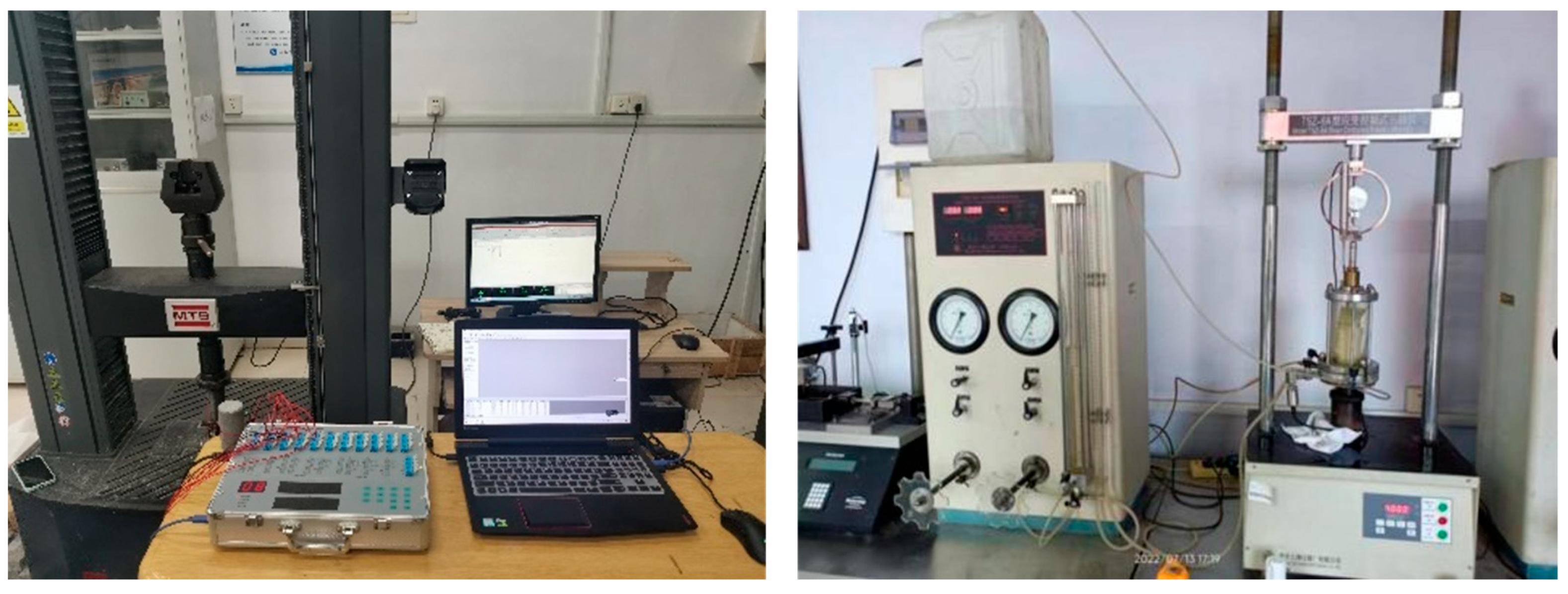
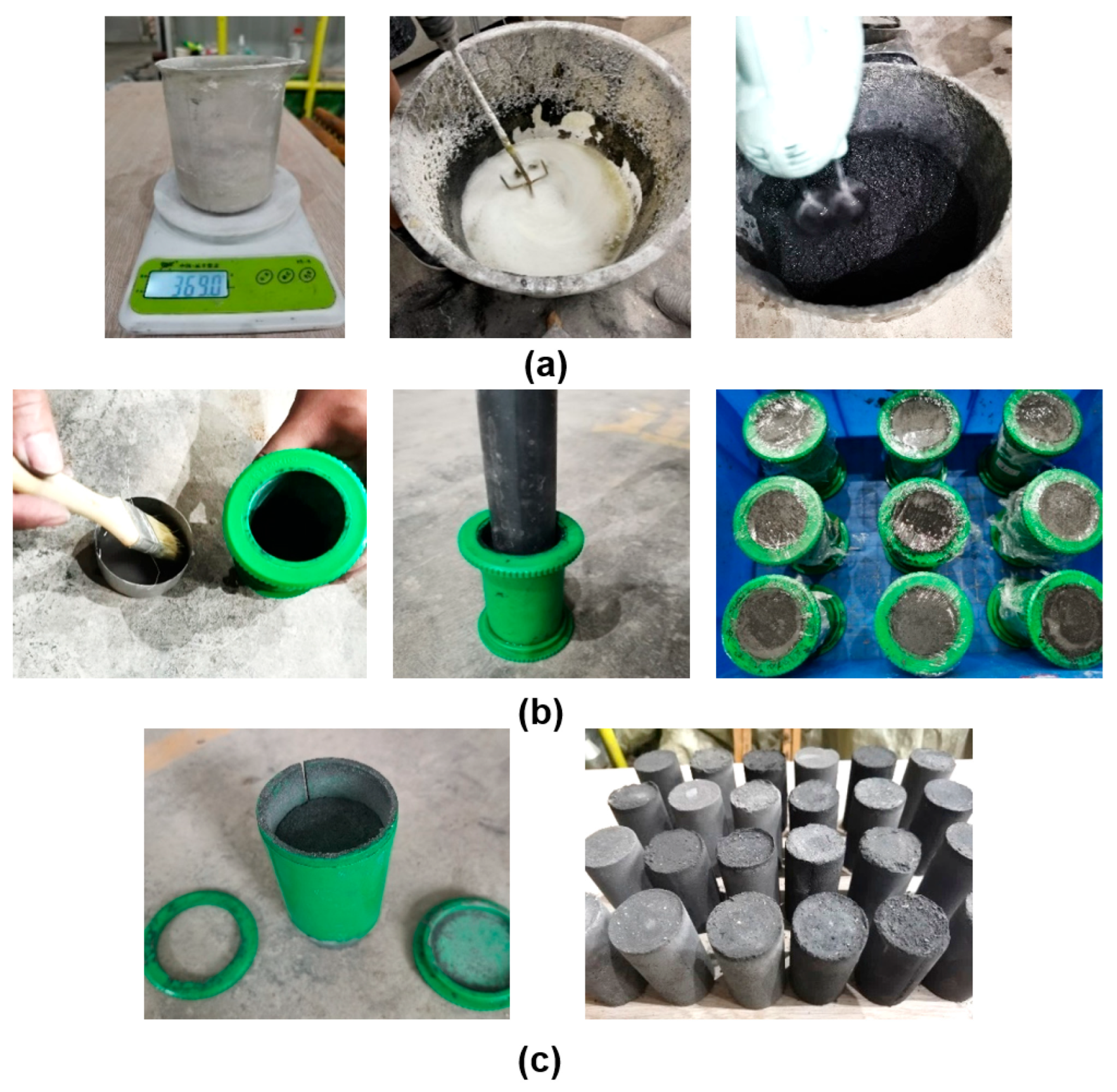
References
- Broere, W. Urban underground space: Solving the problems of today’s cities. Tunn. Undergr. Space Technol. 2016, 55, 245–248. [Google Scholar] [CrossRef]
- Zhang, D.M.; Huang, Z.K.; Yin, Z.Y.; Ran, L.Z.; Huang, H.W. Predicting the kpaing effect on leakage-induced tunnels and ground response in saturated soils. Tunn. Undergr. Space Technol. 2017, 65, 76–90. [Google Scholar] [CrossRef]
- Shahrour, I.; Zhang, W. Use of soft computing techniques for tunneling optimization of tunnel boring machines. Undergr. Space 2021, 6, 233–239. [Google Scholar] [CrossRef]
- Sahoo, J.P.; Kumar, B. Support pressure for stability of circular tunnels driven in granular soil under water table. Comput. Geotech. 2019, 109, 58–68. [Google Scholar] [CrossRef]
- Cheng, X.; Guo, Y.; Zhu, X.; Li, W.; Hu, W.; Xu, L.; Xie, L. Analytical study on additional stress field of double shield TBM tunneling based on Mindlin theory. Appl. Math. Model. 2025, 142, 115980. [Google Scholar] [CrossRef]
- He, C.-Y.; Zheng, H.-Y.; Ding, Z.; Huang, F. Theoretical study on the soil additional stress and principal stress axis deflection during shield tunneling. Tunn. Undergr. Space Technol. 2025, 159, 106511. [Google Scholar] [CrossRef]
- Ding, Z.; Zhang, M.-B.; Zhang, X.; Wei, X.-J. Theoretical analysis on the deformation of existing tunnel caused by under-crossing of large-diameter slurry shield considering construction factors. Tunn. Undergr. Space Technol. 2022, 133, 104913. [Google Scholar] [CrossRef]
- Zhang, T.; Li, Z.; Wang, R.; Zheng, G.; Lei, H.; Fan, Q. Geostress-associated settlements of a raft-foundation building due to shield tunnelling in soft ground. Can. Geotech. J. 2025, 62, 1–12. [Google Scholar] [CrossRef]
- Di, H.; He, P.; Li, X.; Xiao, F.; Chen, H. Influence of large-diameter shield tunneling on deformation of adjacent high-speed railway subgrade in soft soils and effectiveness of protective measures. Tunn. Undergr. Space Technol. 2024, 156, 106260. [Google Scholar] [CrossRef]
- Lyu, H.-M.; Shen, S.-L.; Zhou, A.; Chen, K.-L. A novel method to calculate pressure on the twin-tunnel in layered strata. MethodsX 2020, 7, 101126. [Google Scholar] [CrossRef]
- Cao, K.; Chen, M.; Zhang, M.; Ding, W.; Shang, C.; Ruan, H.; Huang, X. Calculation method for the response changes of existing bridge piles caused by side penetration of shield tunnels considering construction factors and cumulative impact of excavation. Comput. Geotech. 2024, 172, 106472. [Google Scholar] [CrossRef]
- Peck, R.B. Deep excavations and tunnelling in soft ground. In Proceedings of the 7th International Conference on Soil Mechanics and Foundation Engineering, Mexico City, Mexico, 22–30 August 1969. [Google Scholar]
- Attewell, P.B.; Woodman, J.P. Predicting the dynamics of ground settlement and its derivatives caused by tunnelling in soil. Ground Eng. 1982, 15, 13. [Google Scholar]
- Ma, S.; Li, J.; Li, Z. Critical support pressure of shield tunnel face in soft-hard mixed strata. Transp. Geotech. 2022, 37, 100853. [Google Scholar] [CrossRef]
- Hua, Y.-S.; Zhang, D.-M.; Huang, H.-W. Model test study of soil grouting effect on shield tunnel longitudinal structural behavior. Eng. Geol. 2025, 347, 107912. [Google Scholar] [CrossRef]
- Su, D.; Yang, W.-H.; Lin, X.-T.; Zhang, X.; Zhang, Z.; Chen, X. Soil-carrying effect induced by super-large-diameter shallow-buried shield tunneling and treatment measures: A case study in Zhuhai, China. Tunn. Undergr. Space Technol. 2024, 153, 106037. [Google Scholar] [CrossRef]
- Luo, W.; Yuan, D.; Jin, D.; Lu, P.; Chen, J.; Yang, G. Centrifugal Modeling of the Relationship between Tunnel Face Support Pressure and Ground Deformation in Water-Rich Sandy Soil. Appl. Sci. 2022, 12, 5802. [Google Scholar] [CrossRef]
- Ren, L.; Yang, Z.; Zheng, J.; Chen, S.; Guan, Z. Experimental and numerical studies on the longitudinal equivalent bending stiffness of shield tunnel by considering axial force. Structures 2025, 75, 108776. [Google Scholar] [CrossRef]
- Wang, G.; Shan, Y.; Lin, W.; Tian, Z.; Zhou, S.; Alberti, G.S.; Detmann, B.; Zhou, T.; Chen, J. A lightweight physics-data-driven method for real-time prediction of subgrade settlements induced by shield tunneling. Comput. Civ. Infrastruct. Eng. 2025, 40, 3259–3278. [Google Scholar] [CrossRef]
- Chen, L.; Tian, Z.; Zhou, S.; Gong, Q.; Di, H. Attitude deviation prediction of shield tunneling machine using Time-Aware LSTM networks. Transp. Geotech. 2024, 45, 101195. [Google Scholar] [CrossRef]
- Jin, H.; Yuan, D.; Wang, E.; Jin, D.; Liu, H.; Shen, X. Tunneling posture of passive articulated EPB shield in soft soil: A multibody mechanical model-based investigation. Tunn. Undergr. Space Technol. 2025, 158, 106387. [Google Scholar] [CrossRef]
- Tang, X.; Xin, G.; Song, D. Mutual influence mechanism between soft soil interlayers and shield tunnels under seismic action: Laboratory tests and numerical simulations. Earthq. Res. Adv. 2025, 100393. [Google Scholar] [CrossRef]
- NRA. Code for Design of High-Speed Railway; National Railway Administration: Beijing, China, 2014. [Google Scholar]
- MOHURD. Code for Vonitoring Measurement of Urban Rail Transit Engineering; Ministry of Housing and Urban-Rural Development of the PRC: Beijing, China, 2013. [Google Scholar]
- MOHURD. Technical Code for Protection Structures of Urban Rail Transit; Ministry of Housing and Urban-Rural Development of the PRC: Beijing, China, 2013. [Google Scholar]
- Sijin, H.; Yunhong, L. Design and Construction Analysis of Metro Shield Tunnel Crossing Railway Station Yard. Mod. Tunn. Technol. 2012, 49, 166–170. [Google Scholar] [CrossRef]




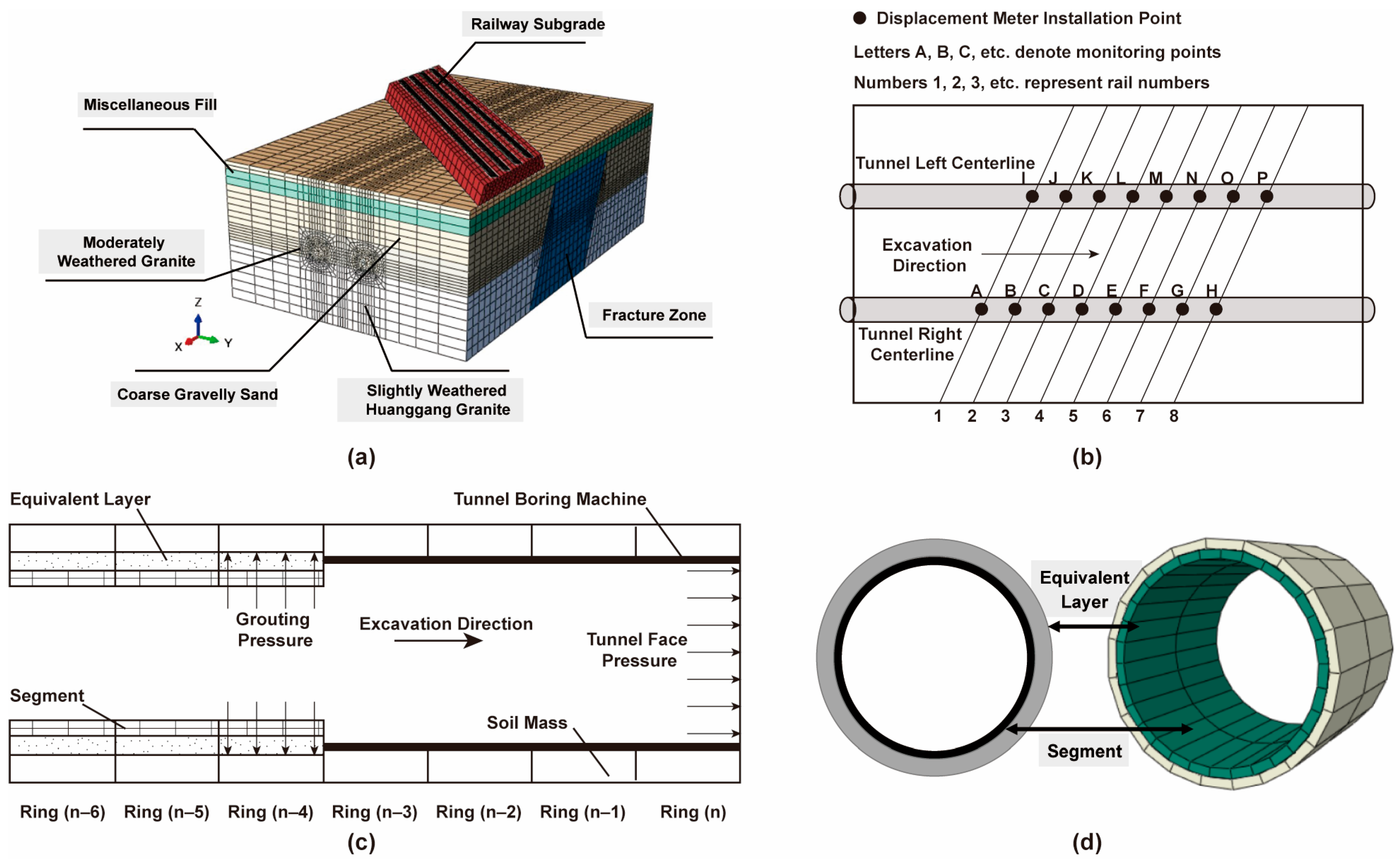



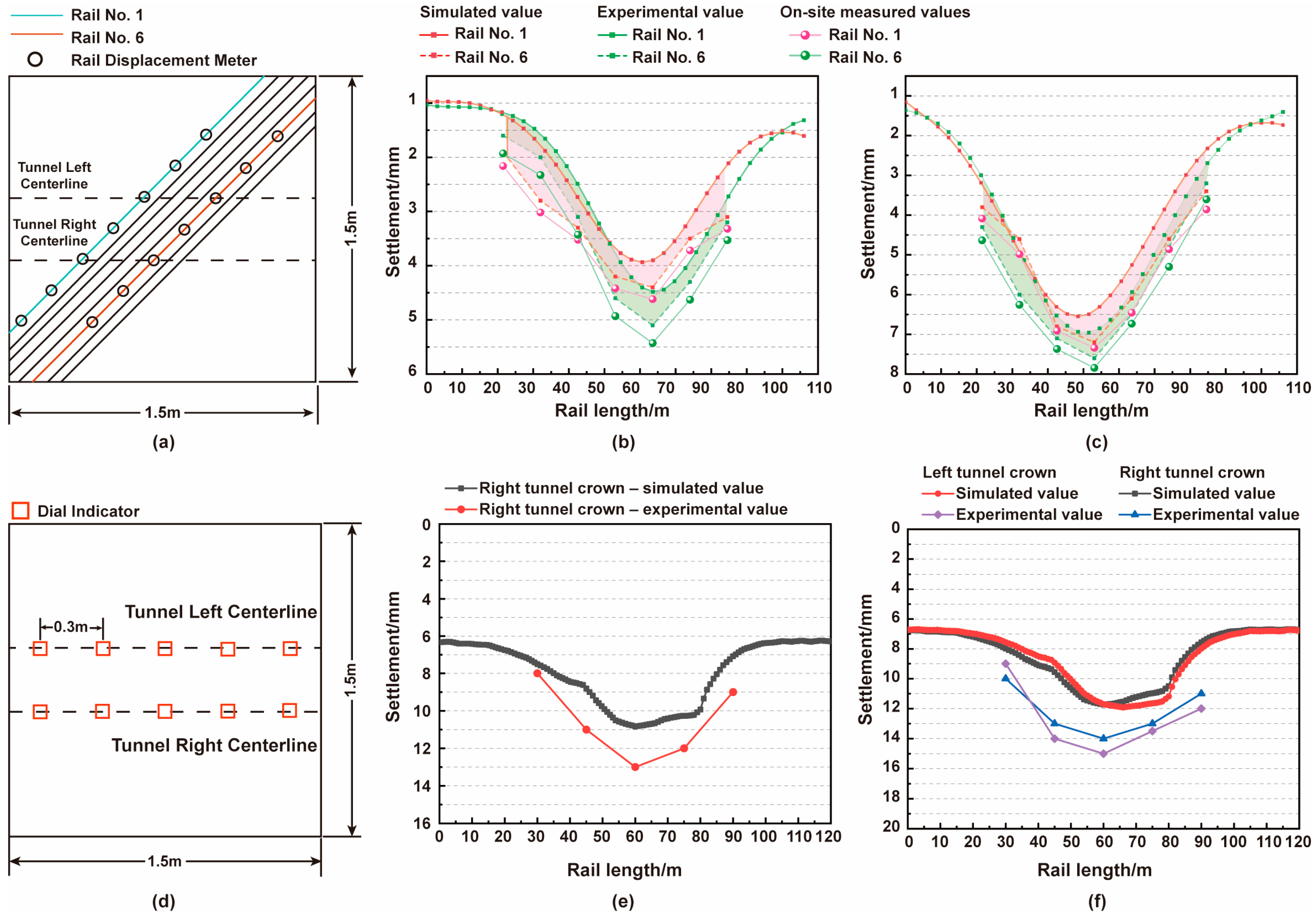

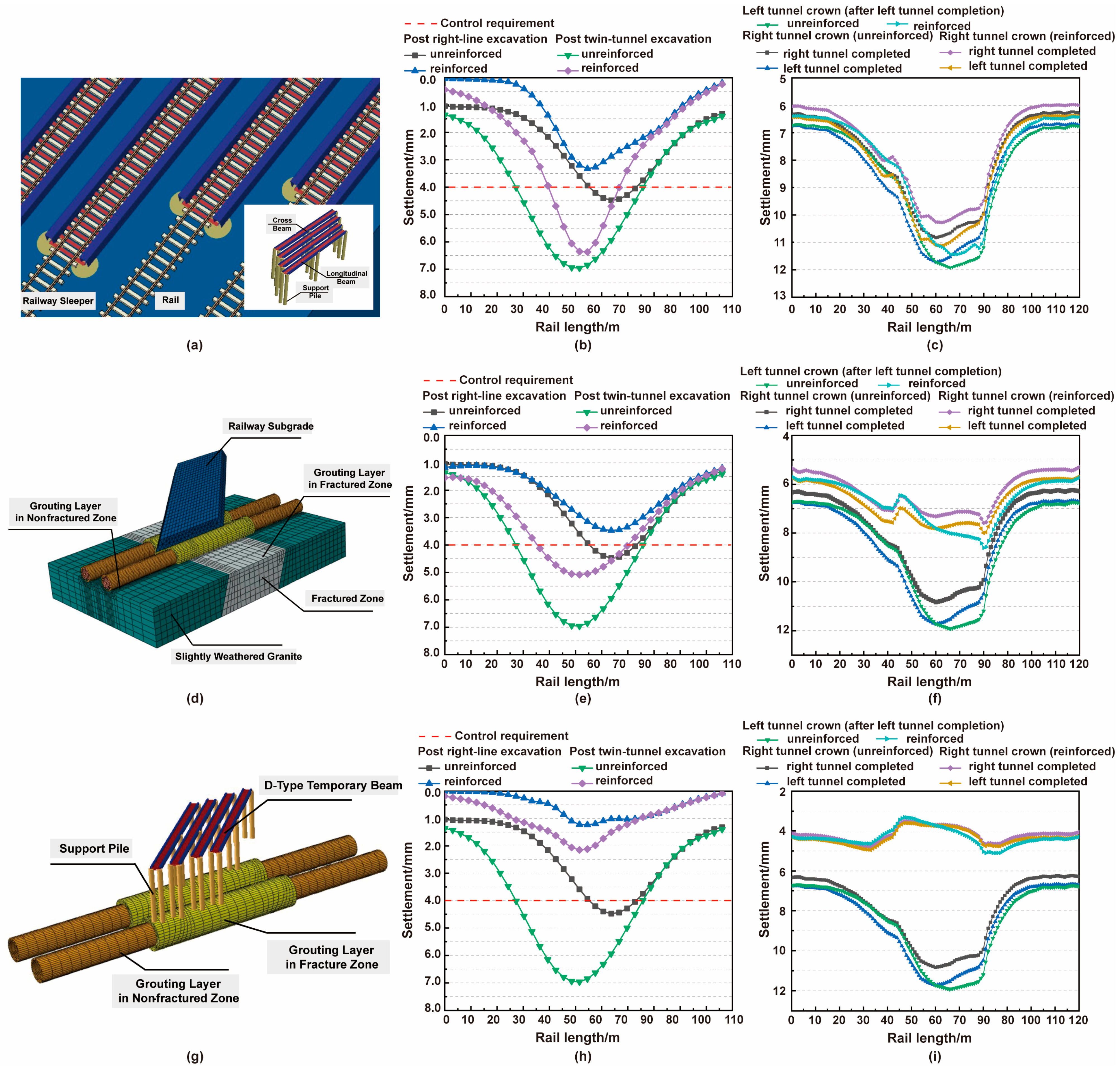
| Layer Name | Density (kg/m3) | Elastic Modulus (MPa) | Poisson’s Ratio | Friction Angle (φ) | Cohesion (kPa) | Thickness (m) |
|---|---|---|---|---|---|---|
| Railway subgrade | 1950 | 130 | 0.3 | 27 | 70 | 4.40 |
| Miscellaneous fill | 1850 | 50 | 0.23 | 12 | 10 | 2.20 |
| Coarse gravel sand | 2000 | 25 | 0.20 | 38 | 0 | 4.30 |
| Fractured zone | 2450 | 500 | 0.18 | 35 | 200 | - |
| Moderately weathered granite | 2570 | 5000 | 0.3 | 27 | 800 | 16.20 |
| Slightly weathered granite | 2580 | 10,000 | 0.25 | 30 | 1200 | 17.30 |
| Segment | 2500 | 24,200 | 0.25 | - | - | - |
| Equivalent layer | 2300 | 150 | 0.25 | - | - | - |
| Rail | 7800 | 210,000 | 0.30 | - | - | - |
| Sleeper | 2500 | 30,000 | 0.20 | 2500 | ||
| Shield shell | 7800 | 210,000 | 0.30 | 7800 |
| Rock Mass Type | Type | Weight (kN/m3) | Elasticity Modu (Mpa) | Internal Friction Angle (°) | Cohesive Force (kPa) | Poisson Ratio |
|---|---|---|---|---|---|---|
| Moderately weathered granite | Prototype | 2570 | 5000 | 40 | 800 | 0.28 |
| Model | 2570 | 100 | 40 | 16 | 0.28 | |
| Slightly weathered granite | Prototype | 2580 | 10,000 | 47.5 | 1000 | 0.25 |
| Model | 2580 | 200 | 47.5 | 20 | 0.25 | |
| Fault zone | Prototype | 2450 | 500 | 35 | 300 | 0.33 |
| Model | 2450 | 10 | 35 | 6 | 0.33 |
| Program | Quartz Sand | Iron Powder | Barite Powder | Rosin | Ethanol | Gypsum |
|---|---|---|---|---|---|---|
| Moderately weathered granite | 25% | 22% | 33% | 1% | 9% | 10% |
| Slightly weathered granite | 30% | 25% | 25% | 1.4% | 8.6% | 10% |
| Fractured zone | 20% | 18% | 42% | 0.6% | 9.4% | 10% |
Disclaimer/Publisher’s Note: The statements, opinions and data contained in all publications are solely those of the individual author(s) and contributor(s) and not of MDPI and/or the editor(s). MDPI and/or the editor(s) disclaim responsibility for any injury to people or property resulting from any ideas, methods, instructions or products referred to in the content. |
© 2025 by the authors. Licensee MDPI, Basel, Switzerland. This article is an open access article distributed under the terms and conditions of the Creative Commons Attribution (CC BY) license (https://creativecommons.org/licenses/by/4.0/).
Share and Cite
Wu, Y.; Wang, S.; Gao, C.; Li, W.; Wang, Y.; Sun, R. Settlement Behavior and Deformation Control of Twin Shield Tunneling Beneath an Operating Railway: A Case Study of Qingdao Metro. Buildings 2025, 15, 4043. https://doi.org/10.3390/buildings15224043
Wu Y, Wang S, Gao C, Li W, Wang Y, Sun R. Settlement Behavior and Deformation Control of Twin Shield Tunneling Beneath an Operating Railway: A Case Study of Qingdao Metro. Buildings. 2025; 15(22):4043. https://doi.org/10.3390/buildings15224043
Chicago/Turabian StyleWu, Yankai, Shixin Wang, Changhui Gao, Wenqiang Li, Yugang Wang, and Ruiting Sun. 2025. "Settlement Behavior and Deformation Control of Twin Shield Tunneling Beneath an Operating Railway: A Case Study of Qingdao Metro" Buildings 15, no. 22: 4043. https://doi.org/10.3390/buildings15224043
APA StyleWu, Y., Wang, S., Gao, C., Li, W., Wang, Y., & Sun, R. (2025). Settlement Behavior and Deformation Control of Twin Shield Tunneling Beneath an Operating Railway: A Case Study of Qingdao Metro. Buildings, 15(22), 4043. https://doi.org/10.3390/buildings15224043








